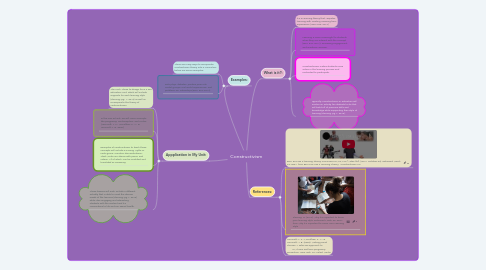Constructivism
by Shannon Tarpey

1. Examples:
1.1. There are many ways to incorporate Contructivism theory into a curriculum, below are some examples:
1.2. Role plays, debates, positive peer role model groups, real-world experiences, and problems ex: internships (EDU 570, 2017).
2. Appplication in My Unit:
2.1. The Unit I chose to design for is a Sex education Unit, which will include supports for each learning style (Fleming, pg, 1, 2019) as well as incoorporate the theory of contruscitivism.
2.2. In this Sex ed unit, we will cover concepts like pregnancy, contraception, and STI/Ds (Jemmott, L. S., McCaffree, K. A., & Jemmott, J. B. 2005).
2.3. Examples of constructivism to teach these concepts will include a moving Myths or Facts game, Condom demonstrations, Think Write Pair Shares with peers, and videos. All of which, can be modified and translated as necessary.
2.4. These lessons will each include a different activtity that is able to meet the diverse needs of the learners (Fleming, pg 1, 2019) while also engaging and interesting students with the content and it's connections to life and our sexual health.
3. What is it?:
3.1. It's a Learning theory that "equates learning with creating meaning from experience"( EDU 570, 2017)
3.2. Learning is more meaningful to students when they can interact with the concept (EDU 570, 2017), increasing engagement and academic success.
3.3. Constructvivsm makes students more active in the learning process and motivated to participate.
3.4. Typically, Constructivism in education will involve an activity for students to do that will build off of previous skills and knowledge while supporting their style of learning (Fleming. pg 1, 2019).
4. References:
4.1. EDU 570 use a learning Theory CONSTRUCTIVISM CC [Video file]. (2017, October 02). Retrieved March 23, 2021, from EDU 570 Use a Learning Theory Constructivism CC
4.2. Fleming, G. (2019). Why it's important to know your learning style. Retrieved March 23, 2021, from Why It's Important to Know Your Learning Style
4.3. Jemmott, L. S., McCaffree, K. A., & Jemmott, J. B. (2005). Making proud choices: A safer-sex approach to HIV/STDs and teen pregnancy prevention. New York, NY: Select Media.


